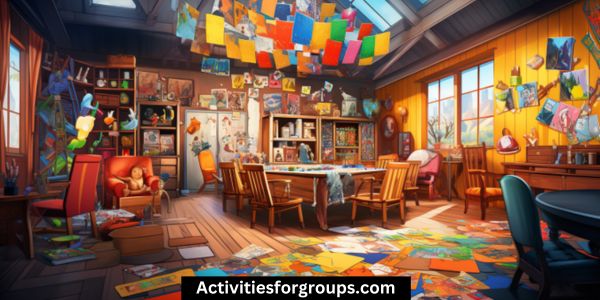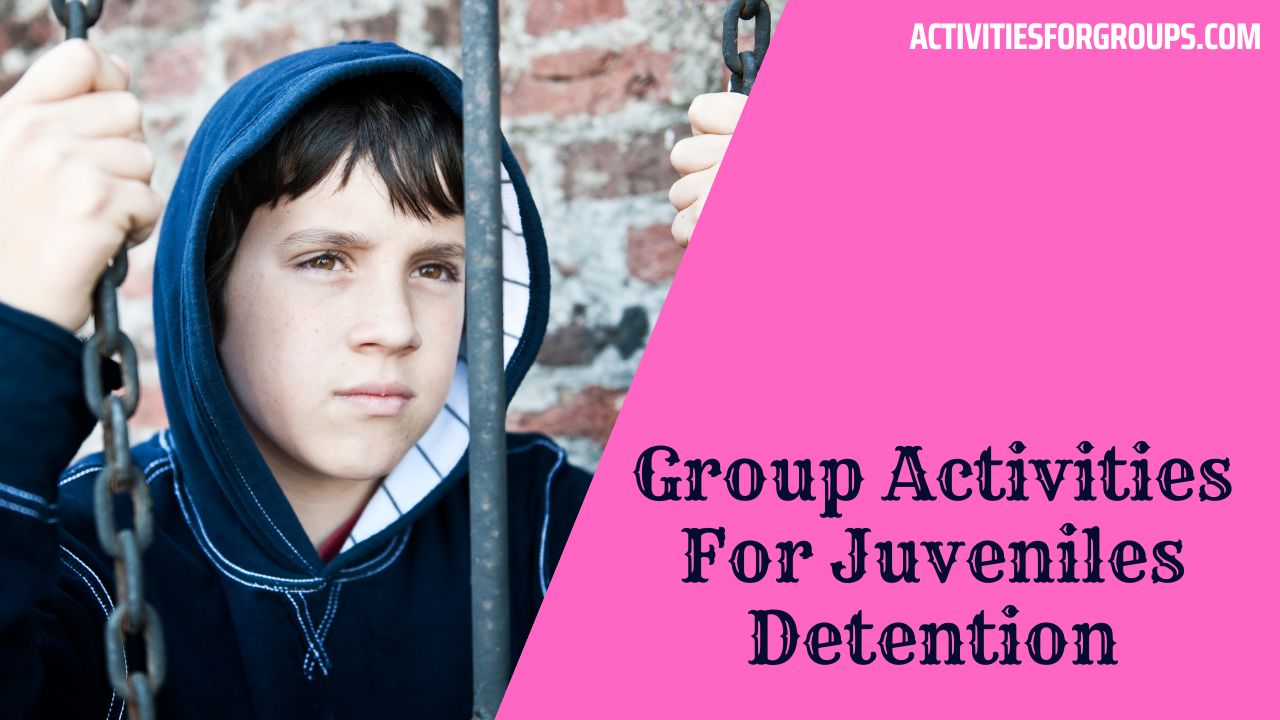Organizing group games in the classroom can be a great way to encourage learning and collaboration. With the right preparation, it can be a fun and educational experience for everyone involved.

In this article, you’ll discover some great ideas for educational indoor group games that can be adapted for different ages. So let’s get started and explore the benefits of group games for the classroom!
Benefits of Group Games
You can reap numerous benefits by organizing group games in your classroom. Group games can promote teamwork, develop communication skills, and encourage creative problem solving. These activities can also help your students become more comfortable with each other while fostering a sense of camaraderie.
Teamwork is a key benefit of organizing group games. Through these activities, students can learn to work together as a unit to complete tasks. They can also learn to listen to each other’s ideas and collaborate to reach a common goal. This type of collaboration can help boost their confidence and strengthen their ability to work in teams.
Communication is another benefit of organizing group games. Through these activities, students can practice communicating their ideas in a clear and concise manner. They can also learn to listen to each other’s ideas and opinions and build respect for each other’s viewpoints. This type of communication can help foster a sense of trust and understanding between students.
Group games can also help students develop their problem-solving skills. By working together to complete a task, they can learn to identify problems, brainstorm solutions, and come to a consensus. This type of critical thinking can help students become more confident in their own problem-solving abilities.
Organizing group games in your classroom can have numerous benefits for your students. These activities can help promote teamwork, develop communication skills, and encourage creative problem solving. By organizing these activities, you can help your students become more comfortable with each other while fostering a sense of camaraderie.
Types of Group Games
There are numerous educational group games that you can organize for your classroom to foster teamwork, communication, and problem-solving skills.
One type of game that works well in a classroom setting is role play scenarios. Through role play, students can practice important skills such as public speaking, decision-making, and conflict resolution. You can create scenarios that are tailored to the topics you’re teaching in class or use scenarios from popular books or movies.
Another type of group game is team challenges. These are activities that require the students to work together to solve a problem or complete a task. For example, you could have teams of students build a tower out of blocks or solve a riddle. Team challenges are great for teaching collaboration and problem-solving skills.
Other popular group games include scavenger hunts, board games, and team trivia. All of these activities can be adapted to fit the educational needs of your classroom. For example, you could turn a scavenger hunt into a math or science challenge by having students answer questions or solve equations in order to find the hidden items.
No matter which type of group game you choose, they can all help to engage your students and foster important skills. They can also be a great way to break up the monotony of the classroom and bring some fun into the lesson.
Preparing for Games

Once you have chosen a game, it’s time to prepare for it. Planning time is essential to make sure the game runs smoothly. Here are some things to keep in mind:
- Check the game’s instructions and materials for exact setup and rules.
- Consider the group dynamics. Think about the number of participants, the age range, and the time allotted for the game.
- Take into account any special needs or requests of the participants.
It’s important to have a clear idea of the game’s rules and expectations. Make sure to plan ahead and set a timeline for the game. Explain the rules of the game to everyone before starting. Take into account the group dynamics, as it will make the game more enjoyable for participants. Be prepared to answer questions and clarify any doubts.
Encourage the participants to get creative and have fun. Give everyone a chance to share their ideas and cooperate to make the game enjoyable for everyone. Make sure everyone is on the same page and that everyone takes turns and follows the rules.
Facilitating Games
Now that you have prepared for the game, how can you facilitate it? Facilitating an educational indoor group game for a classroom is an important part of creating a successful learning experience. To ensure the game is both enjoyable and educational, it’s important to make sure everyone is included and conflicts are resolved. There are a few strategies you can use to ensure this.
Inclusion Strategies are crucial for facilitating a successful game. Make sure everyone is aware of the rules and objectives. Encourage everyone to participate and ask questions if necessary. Make sure no one is left out and that everyone is encouraged to cooperate.
Conflict Resolution is also important when facilitating a game. If an issue arises, make sure to intervene quickly and calmly. Ask the students to explain the issue and come up with a solution together. Be sure to provide a safe environment for everyone to express their opinions and come to a resolution.
Finally, it’s important to assess the game at the end. Ask the students what they enjoyed or didn’t enjoy about the game. Take notes and use the feedback to adjust the game for future sessions.
Facilitating an educational indoor group game for a classroom requires patience and understanding. Be sure to use Inclusion Strategies and Conflict Resolution to ensure the game is enjoyable and educational. With the right approach, you can make sure everyone in the classroom has a positive experience.
Adapting for Different Ages

Adapting educational group games for different ages can be a challenge, but with the right approach it can be done. Here are some key tips for creating age-appropriate group activities:
- Break down the activity into smaller, manageable steps. This will help ensure that everyone can understand and follow the instructions.
- Utilize cross cultural comparison. Introducing different cultures and countries can be a great way to engage and educate students of all ages.
- Encourage cooperative learning. Group activities are a great way to foster collaboration and teamwork, even among students of different age groups.
Finding the right balance between challenging and fun can be difficult. But by taking the time to tailor the activity to the age group, it’s possible to create enjoyable and educational group activities that everyone can enjoy.
Through careful planning and execution, it’s possible to create meaningful activities that can be enjoyed by all ages.
Frequently Asked Questions [FAQs]
What Materials Are Needed for the Games?
You’ll need supplies like cards, dice, or game pieces to facilitate problem solving and time management activities. Some games may require other materials such as pens, paper, or cards. Be sure to have enough for everyone in the group.
Is There a Limit on the Number of Participants?
You can have any number of participants when making connections and solving problems. Encourage collaboration and creative thinking to maximize the outcome of the group activity.
How Long Does It Take to Set up the Games?
The time commitment and preparation costs depend on the game. Generally, it takes a few minutes to set up, but can take longer for more complex games.
Are There Any Risks Associated With the Games?
When organizing group games for students, it’s important to consider potential risks for their safety. Make sure to assess any game risks before playing, such as physical or emotional harm.
What Safety Measures Should Be Taken During the Games?
For safety, ensure social distancing and peer supervision. Have an adult present to monitor activity and ensure guidelines are followed.
Conclusion
Organizing educational group games for classrooms can be a great way to engage students and help them learn. By understanding the benefits of group games, knowing the types of games available, preparing for the activities, and facilitating them effectively, you can create a fun learning environment for students of all ages.
Group games can be a valuable addition to any classroom curriculum.




Leave a Reply